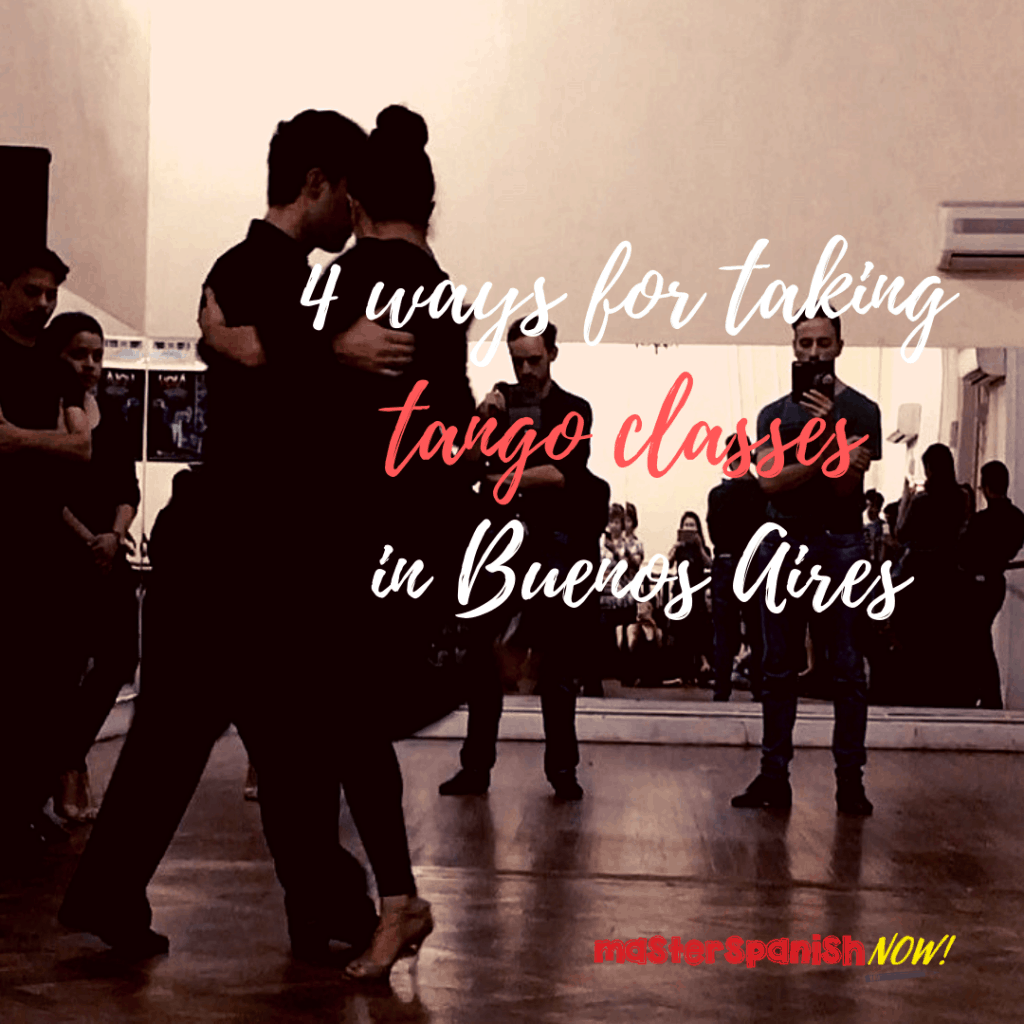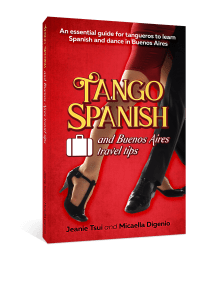Want to take tango class in Buenos Aires but don’t know how? In this blog post we will walk you through 4 common ways for learning tango in Buenos Aires. Finally we will offer a few tips on getting the best result of your learning in the mecca of tango!
4 ways to take tango classes in Buenos Aires
1. Before milonga
Many milongas in the city would offer a free group class included in the ticket. This provides a great opportunity for learning. In August during the Mundial season you will find many of these classes taught by world renowned masters- a great bargain as it would be more expensive to take their classes elsewhere.
You can look for milongas with group classes on Hoy Milonga. For more accurate and updated information of the class, check the Facebook page of the milonga you are planning to visit.
2. Tango school
There are many tango schools in the city which offer tango classes back to back everyday. The 2 most well-known are DNI and Escuela Mundial de tango. It would be a more expensive option of tango class in Buenos Aires, but the classes are more commonly attended by tango tourists so the teachers are more prepared to teach in English.
3. Tango festival
If you fancy taking tango classes in Buenos Aires with big names, tango festivals would be a convenient choice. There are many festivals held in different period of time in the year, offering an intensive schedule of multiple classes everyday within one or two weeks by a variety of masters of different styles, so that you can take all your classes in one place without the need of traveling around the city.
Two regular Tango festivals that are held every year are: Cita (March) and Tango Salon Extremo (August).
4. Private classes
If you are very keen to learn with a particular master/couple, and have a bigger budget, taking private classes would be very beneficial for your learning—you will have full attention of the teachers, and they will be giving more specific advice on improving your tango.
One way to contact the teachers for private classes is to look for them on Facebook and send them private messages. However, some very popular teachers may have their inbox overflowed with messages . Another way would be approaching them after their group class or in milonga after their performance.
Final tips for the best result of your tango learning
1. Ask your “home teacher” for advice
Before your trip it may be a good idea to discuss with your teacher(s) in your city for recommendation of tango class in Buenos Airs. Many tango teachers would have the experience of learning tango in Buenos Aires so they are good resources for advice.
2. Follow your favorite master(s) on Facebook
Many Argentine teacher would have a Facebook account dedicated for publicity where they would post information about their group classes and milongas in which they are performing, making it easier for you to approach and learn with them.
3. Try a group class before booking a private class
Many times a fabulous dancer might not necessarily be a good teacher, and vice versa. Before committing to a private class with a new teacher, it’s always good to take at least one group class with him/her so to experience the teaching and see if it suits you.
4. Don’t take too many classes from different masters
Very often foreign tangueros would find it difficult to resist the temptation of taking many classes with different masters, as the class fee is always a big bargain compared to that back home. However, taking too many classes with different masters often results in confusion, as each master has a different technique. It is not unusual for one master teaching one technique and another master teaching the exact opposite. It’s usually good to focus on learning with one or two master(s)/couple(s) at a time.
5. Set a realistic goal
Many people would go to Buenos Aires thinking the trip would help them to become advance dancers. While intensive learning would definitely be helpful, it will be unrealistic to expect the change to happen overnight. It takes time for your body to adapt to a new technique. The best approach would be taking notes (or videos, if the teacher allows) of the classes, and take time to practice the skills regularly so that they are incorporated into your body and become habitual.
Like our blog post and want to read more? Like our Facebook Page so you won’t miss any new post (plus you can find loads of FREE resources for learning Spanish for tango!)
Want more Spanish practice? You can book a class with our Tango Spanish teachers who are tangueras living in Buenos Aires
Going to Buenos Aires soon? Check out our books Tango Spanish and Buenos Aires Travel Tips and Tango Spanish: Essential Phrase Book For Tango Class (And Language Guide for Tango Shoe Shopping).


